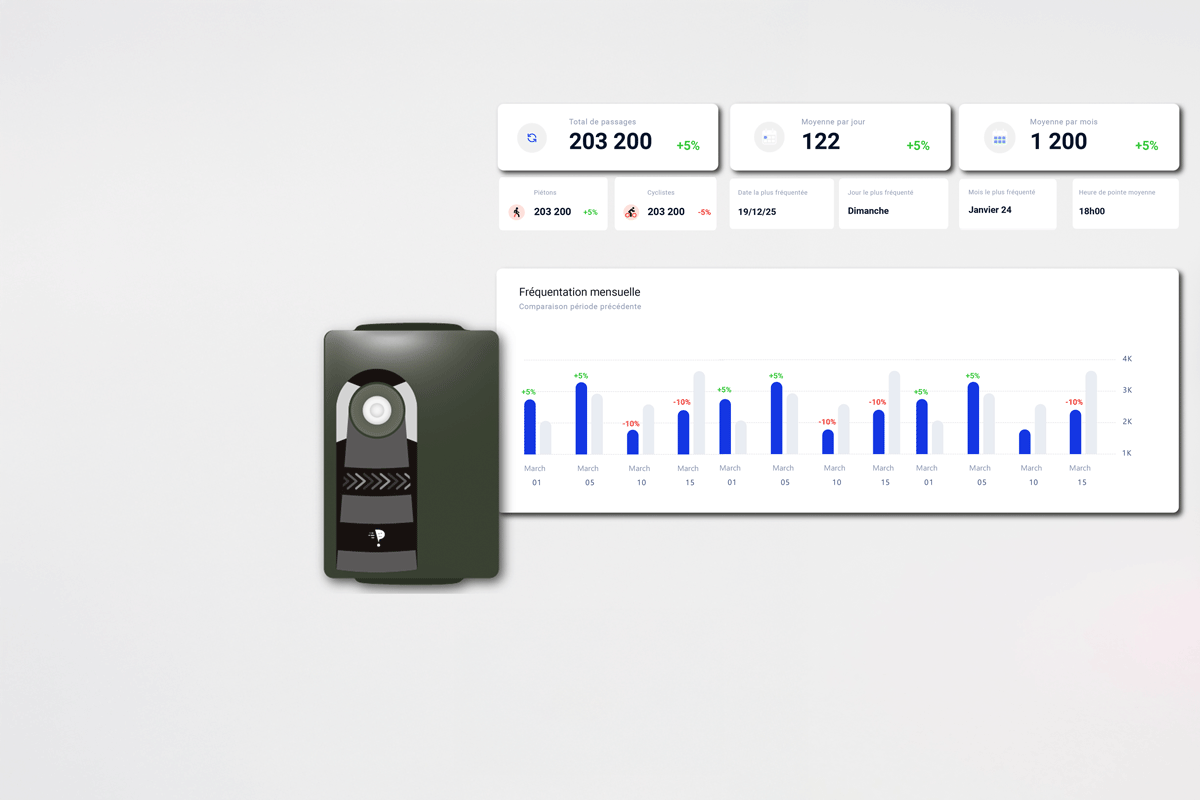Whether you are carrying out a project to enhance a natural site, develop a greenway or host events, it is increasingly common for funders to require concrete data to validate or monitor a grant. Attendance indicators become an eligibility condition, or at the very least, a valuable bonus in your file. It is therefore better to anticipate their collection to avoid running out of arguments at the key moment.

A number is often more convincing than a hunch:
“This trail is getting busier” vs. “This trail receives an average of 250 visitors per day in summer, with a peak of 15,000 visitors in August.”
Calls for public projects (DETR, DSIL, rural contracts, Interreg, etc.) or European funds (FEDER, LEADER) want to ensure that supported projects really benefit the population.

Funders are looking for sustainable projects. A well-attended project is more likely:
Ex: setting up a reception area or redoing a footbridge is not perceived the same if you can demonstrate 50,000 annual crossings.

A project that relies on tangible data is perceived as more solid, more professional. This can make the difference between two similar cases.
💡 Counting in advance makes it possible to demonstrate that the site is already visited, or to detect underuse to be corrected.
Examples:
If you are already a laureate, it is often requested to produce attendance monitoring during the duration of the project, for:
This is where counting comes into its own:
📊 So you can produce graphs, tables or comparisons directly usable in your final reports.
⏱ It all depends on your deadlines:
💬 It is often more strategic to have 3 months of solid data than to rely on a one-week survey.
Counting is not just a measurement tool: It is a financing lever and a management argument.
The more accurate data your projects are equipped with, the better you will be able to:
We support many local authorities in integrating metering into their projects. Discreet, autonomous, mobile, our sensors are designed to adapt to your reality on the ground.
📩 Contact us to discuss your needs and build the best follow-up solution together.